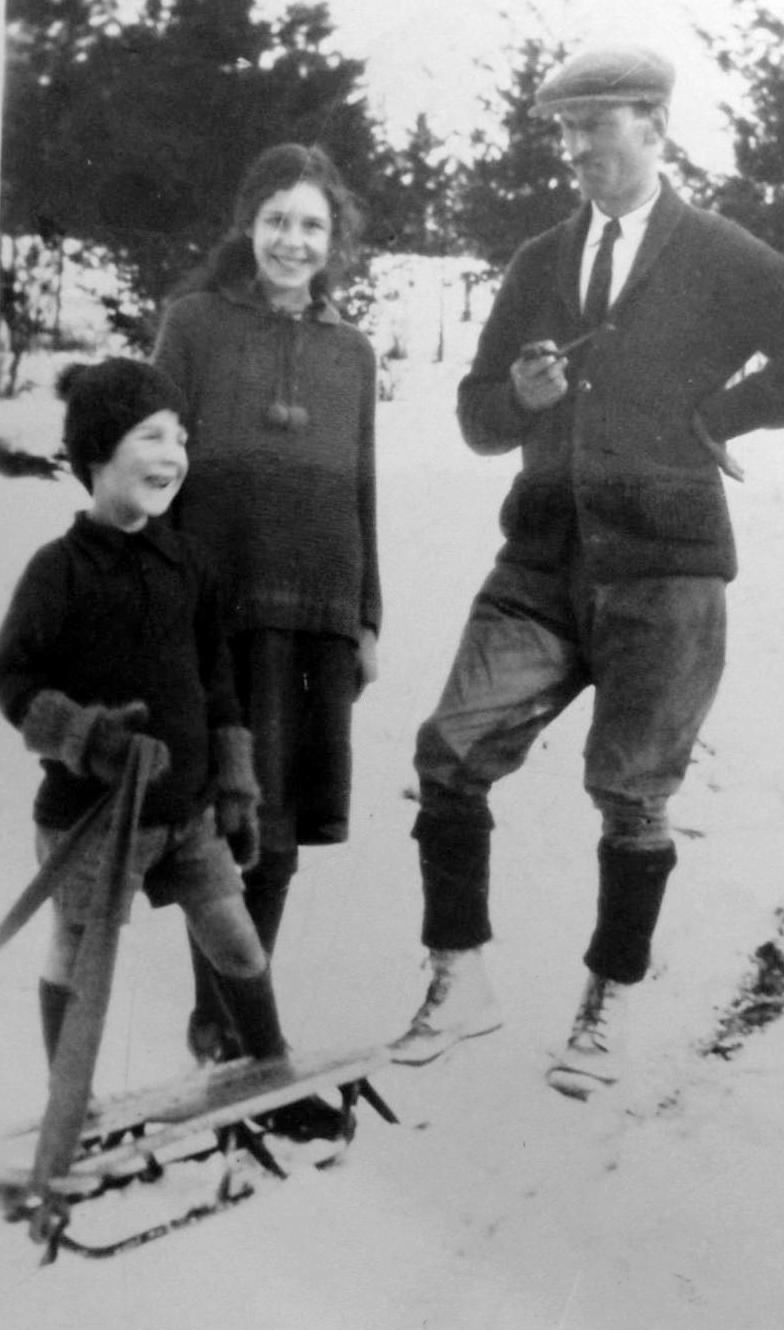
American Sleds

Figure 1.--Here we see an American boy having fun in the snow with his sled with his sister and father. Mom may have taken the snapshot. It was taken in 1924. Notice it is the old style sled that had no turning mechanism. 'Belvoir 1924' is written on the back. We think that this means Fort Belvoir adascent to Arlington National Cemetary.
|
|
Very high on the wish list for American boys in the 20th century were three childhood vehicles: bikes/trikes, sleds, and coaster wagons. These are items that remain were abd remain virtually with American childhood. The winter option was of course the sled. Most of us who grew up in the 20th century recall the excitement of sledding down snow-covered hills. Kids in the South were cut out of the excitement for lack of snow. Kids in the North, however, were in for all kinds of fun when the snow fell. And sleds were one of the ways to have fun on the snow. The sled like the wagon began as a utilitarian vehicle to move goods. And both required propulsion, usually horses or oxen. In really snow places like Canada, Russia, and Scandanavia, sleds were also used rather like buggys to trabnsport peipole, usually wth horses. Recreational vehicles were a little different. There was no propulsion other thn gravity. One went from the top of a hill or other elevated point to the bottom with koads of fun all along the way down hill. We do not know much about recreational sleds in the 19th century. We suspect that most were rather basic home-made affairs. We note the U.S. Parent Iffice awarding a sled patent to the S.L. Allen Company of Philadelphia, Pennsyvania (1889). And we see sleds in the earlhy Sears and Wards mail order catalogs. They were wood sleds with metal runners. As to sled technology, early sleds had flat runners. This changed after the turn-of the 20th century. Ee see wooden bumpers (1907). Another important innovatiin was the articulated bumper for steering (1928). Straight runners were standard (through the early-30s). A popular model was was the Lightning Speedster wuth a rounded wooden front which could be easily turned (1939-42). Speed King and Radio Flyers were the most popular (1950s-70s). This was the style of sled I recall (1940s-50s). My brother and I had one as did our friends. Radio Flyer of course was even better known for their wagons. They came up with all kinds of innovation beyound the basic sled, some made for adults. Probably the greatest change for children's sledding has been rubvberized plastic round/disc sleds and toboggan.
HBC

Navigate the Boys' Historical Clothing Web Site:
[Return to the Main American convences page]
[Return to the Main U.S. play page]
[Return to the Main U.S. activities page]
[Introduction]
[Activities]
[Biographies]
[Chronology]
[Clothing styles]
[Countries]
[Essays]
[Bibliographies]
[Contributions]
[FAQs]
[Glossaries]
[Images]
[Links]
[Registration]
[Tools]
[ Boys' Clothing Home]
Created: 7:44 PM 6/7/2018
Last updated: 7:44 PM 6/7/2018



